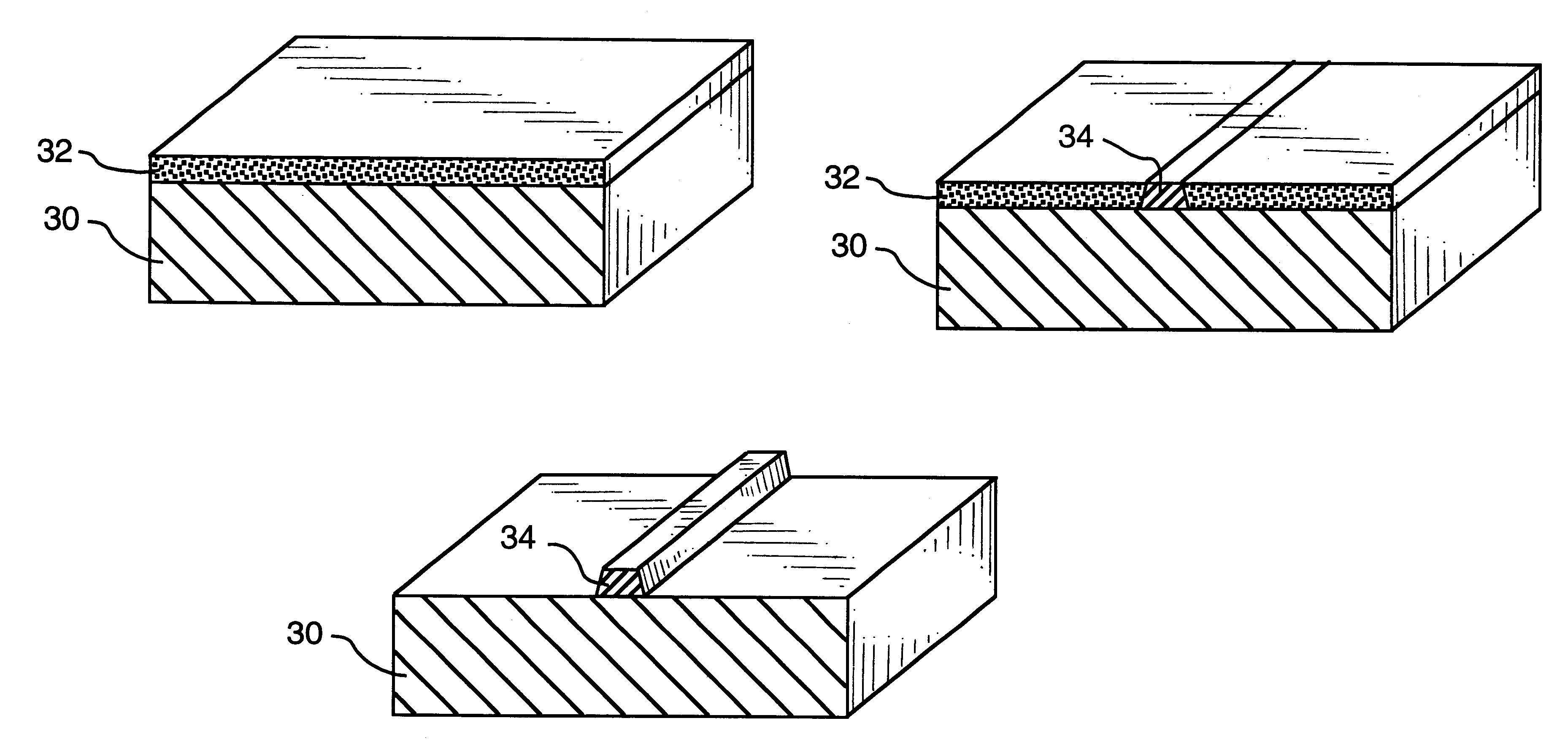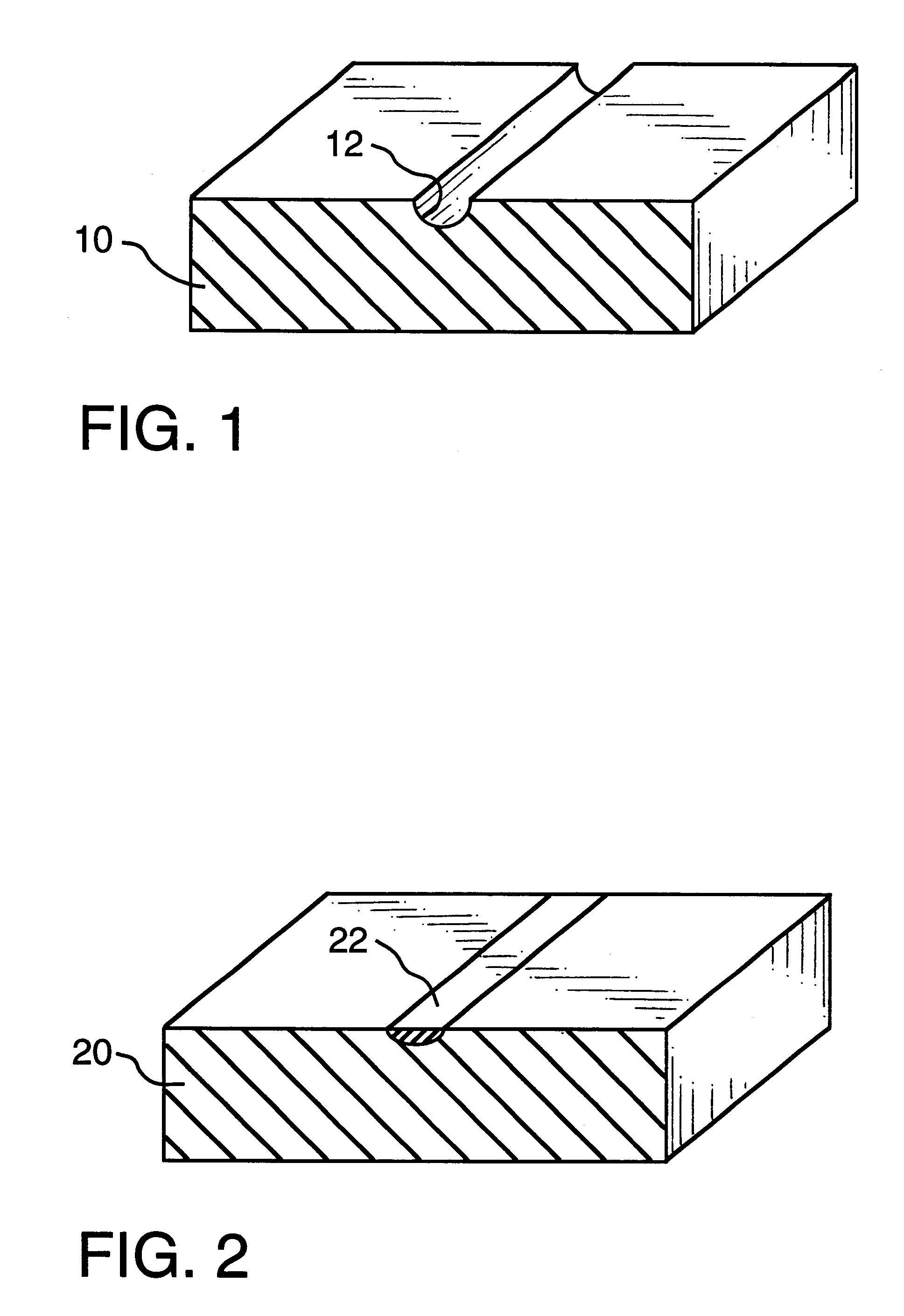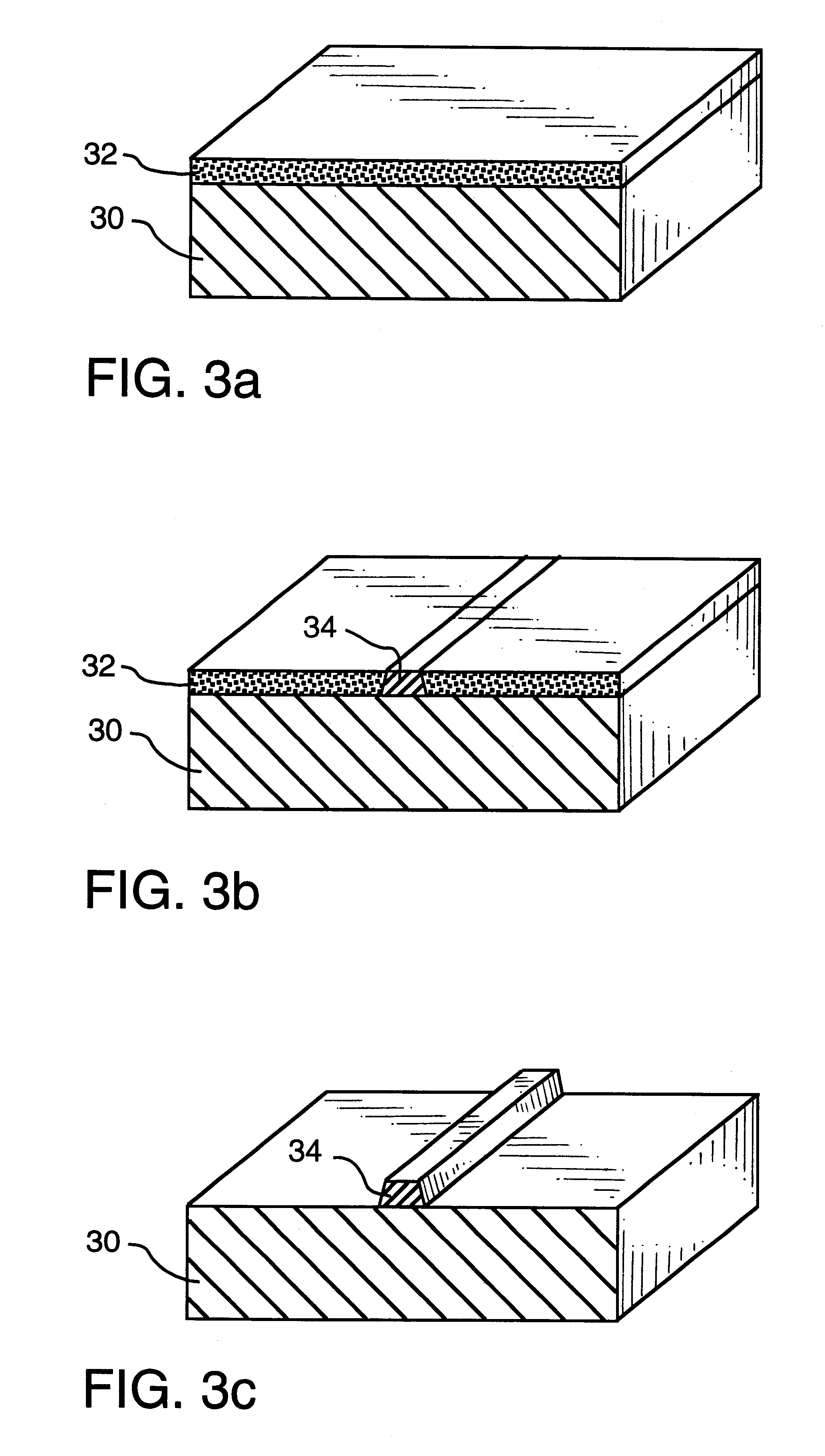Laser marking method and apparatus
- Summary
- Abstract
- Description
- Claims
- Application Information
AI Technical Summary
Problems solved by technology
Method used
Image
Examples
example 2
A paste consisting of 50 g fine powder inorganic pigment sold by Cerdec under the designation 10399 Black, 5 g of hydrous sodium lithium magnesium silicate, and 120 g of water was mixed in a ball mill and stored in a small jar. The paste was applied at a thickness of 1.5 mils (about 38 microns) wet on a 4.times.5 inch (about 10.times.13 cm) pane of window glass. The pane was placed on a hot plate until the paste dried. Laser marks were made with a Lumonics LightWriter SPe YAG laser under different laser settings. The laser was operated in continuous wave fashion. The beam current was 32 amps. Writing speeds of 1, 2, 5, 10 and 20 inches / second (about 2.5, 5, 12.5, 25 and 50 cm / second) were employed. Dot sizes of 0.005, 0.01, and 0.02 inches (about 125, 250 and 500 microns) were investigated. Single stroke fonts were used for these tests. The non-irradiated portion of the material was removed. These marks on the surface of the substrates are bluish grey in color. The preferred mark in...
example 3
A paste consisting of 50 g fine powder CuO, 5 g of hydrous sodium lithium magnesium silicate, and 120 g of water was mixed in a ball mill and stored in a small jar. The paste was applied at a thickness of 1.5 mils (about 38 microns) wet on a 4.times.5 inch (about 10.times.13 cm) pane of window glass. The pane was placed on a hot plate until the paste dried. Laser marks were made with a Lumonics LightWriter SPe YAG laser under different laser settings. The laser was operated in continuous wave fashion. The beam current was 30 or 32 amps. Writing speeds of 1, 2, 5, 10 and 20 inches / second (about 2.5, 5, 12.5, 25 and 50 cm / second) were employed. Dot sizes of 0.002, 0.003, 0.004, 0.005, 0.01 and 0.02 inches (about 50, 75, 100, 125, 250 and 500 microns) were investigated. Single stroke fonts were used for these tests. The non-irradiated portion of the material was removed. The resultant marks on the surface of the substrates are brown in color.
example 4
A paste consisting of fine powder 50 g cobalt oxide, 5 g of hydrous sodium lithium magnesium silicate, and 100 g of water was mixed in a ball mill and stored in small jars. The paste was applied at a thickness of 6 mils (about 150 microns) wet on a 4.times.5 inch (about 10.times.13 cm) pane of window glass. The pane was placed on a hot plate until the paste dried. Laser marks were made with a Lumonics LightWriter SPe YAG laser under different laser settings. The laser was operated in continuous wave fashion. The beam current was 30 or 32 amps. Writing speeds of 1, 2, 5, 10 and 20 inches / second (about 2.5, 5, 12.5, 25 and 50 cm / second) were employed. Dot sizes of 0.002, 0.003, 0.004, 0.005, 0.01 and 0.02 inches (about 50, 75, 100, 125, 250 and 500 microns) were investigated. Single stroke fonts were used for these tests. The non-irradiated portion of the material was removed. The marks on the surface of the substrates are blue in color. The darkest blue marks occur at writing speeds ...
PUM
| Property | Measurement | Unit |
|---|---|---|
| Fraction | aaaaa | aaaaa |
| Thickness | aaaaa | aaaaa |
| Thickness | aaaaa | aaaaa |
Abstract
Description
Claims
Application Information
 Login to View More
Login to View More - R&D
- Intellectual Property
- Life Sciences
- Materials
- Tech Scout
- Unparalleled Data Quality
- Higher Quality Content
- 60% Fewer Hallucinations
Browse by: Latest US Patents, China's latest patents, Technical Efficacy Thesaurus, Application Domain, Technology Topic, Popular Technical Reports.
© 2025 PatSnap. All rights reserved.Legal|Privacy policy|Modern Slavery Act Transparency Statement|Sitemap|About US| Contact US: help@patsnap.com



